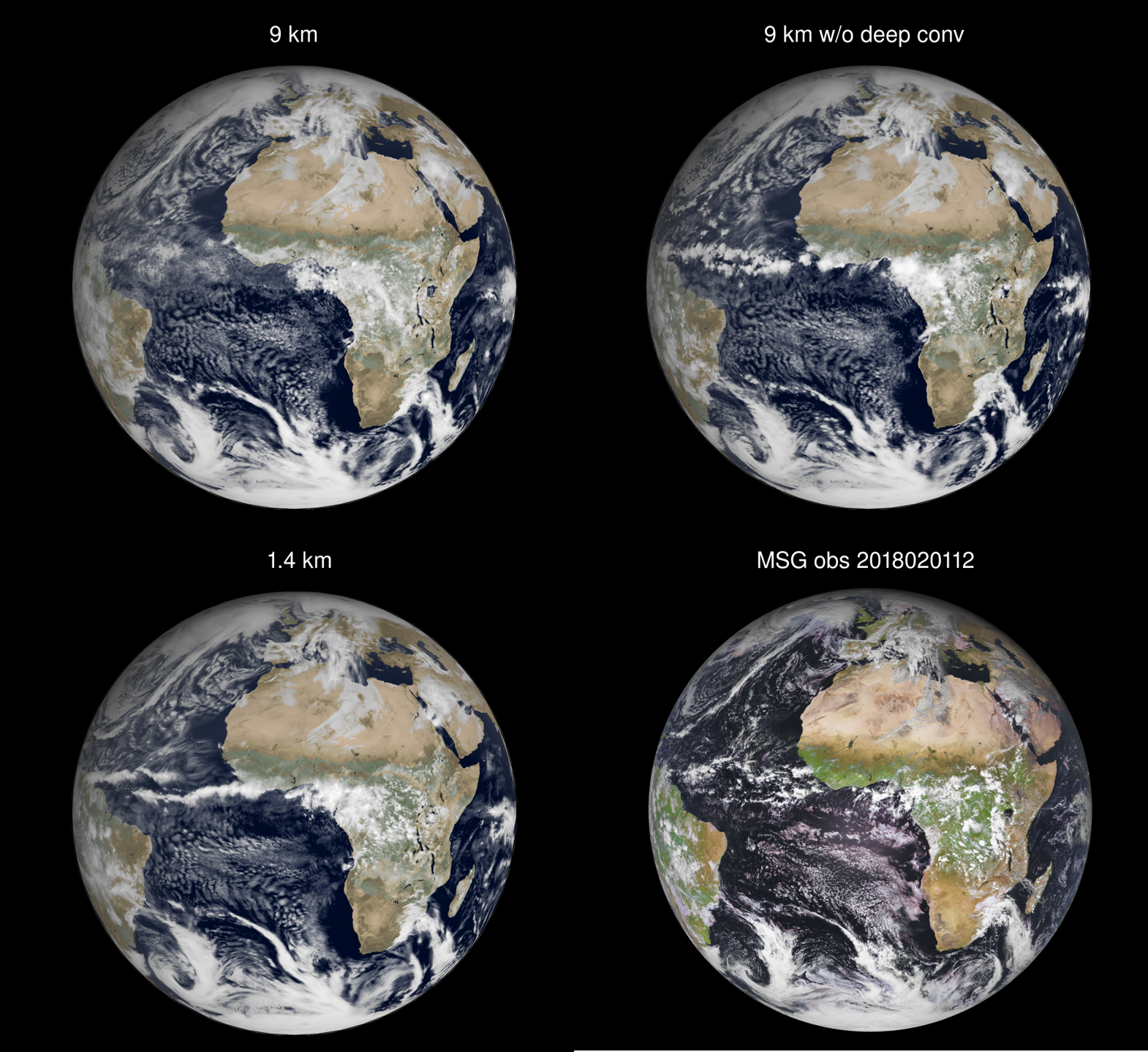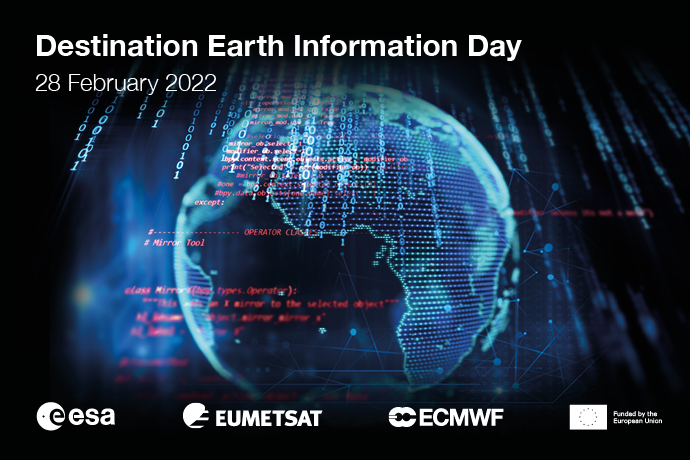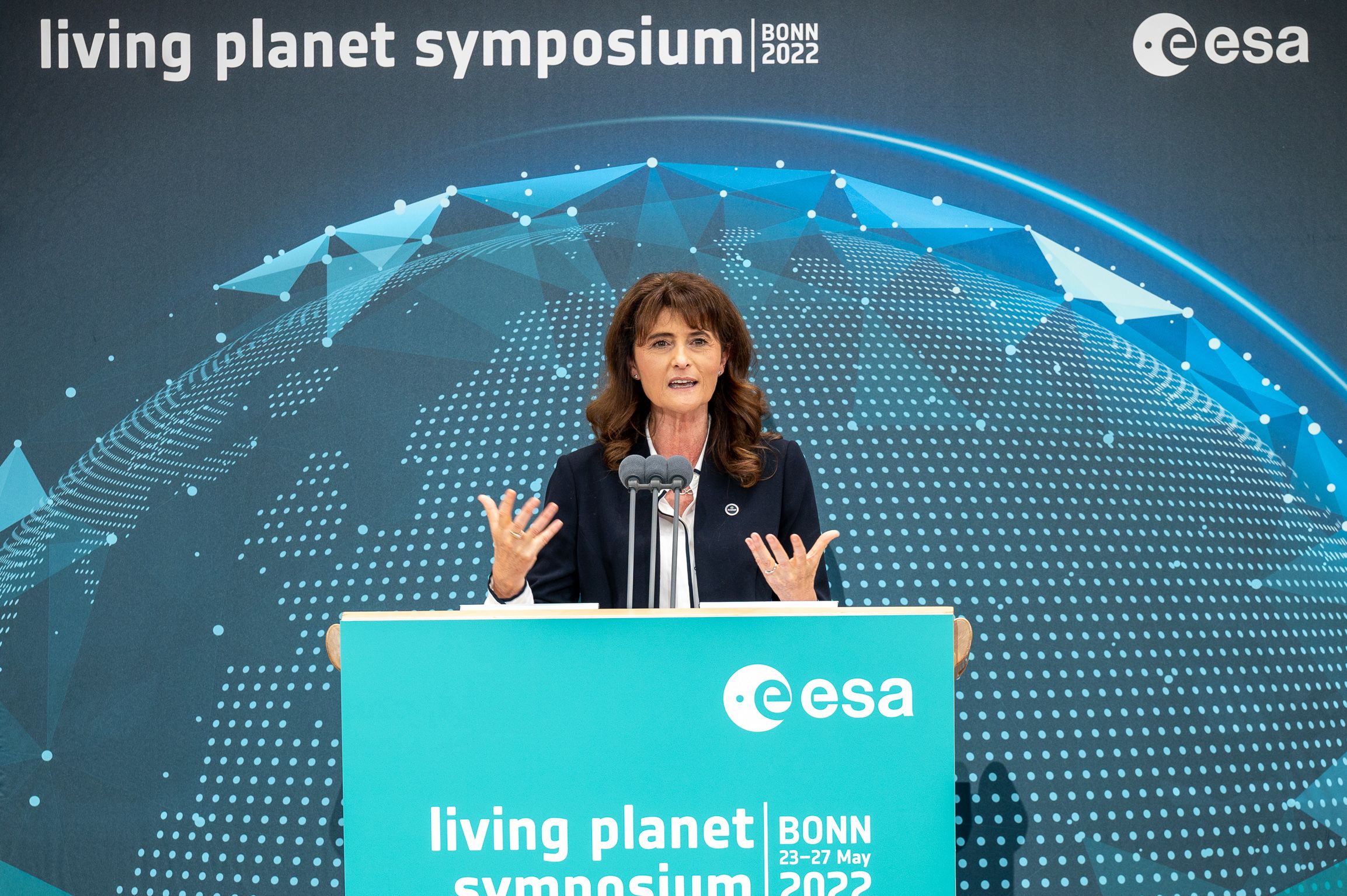Destination Earth
Our planet's digital twin
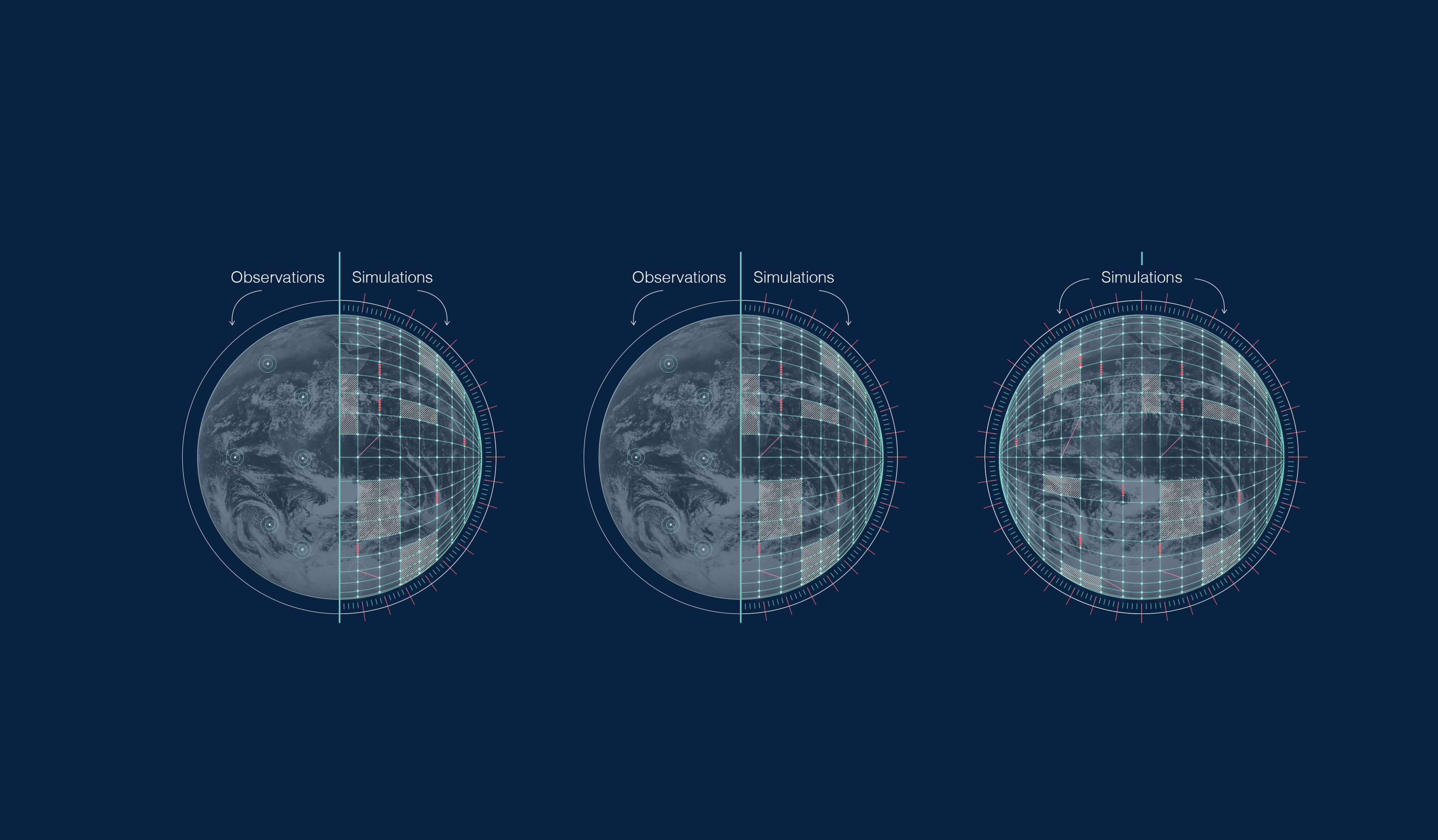
What if you could look into the future of our planet?
How will the impact of severe weather and climate change affect your country or your region and how will you manage the risks of environmental extremes?
To address the need for enhanced prediction capabilities, the European Union has set in motion Destination Earth (DestinE), a visionary initiative to create Digital Twins of the Earth system supporting climate change adaptation policies and decision-making for reducing the impacts of extremes. DestinE will contribute to revolutionising the European capability to monitor and predict our changing planet and complement existing national and European services.
The initiative is a pillar for the EU’s Green Deal Strategy to protect the environment and curb greenhouse gas emissions in line with the Paris Agreement and the aim to limit global warming to 1.5 degrees.
The European Centre for Medium-Range Weather Forecasts (ECMWF) is one of the organisations making this vision a reality, together with the European Space Agency (ESA), and the European Organisation for the Exploitation of Meteorological Satellites (EUMETSAT).
In coordination with its Member States, partners and stakeholders in the wider scientific, technological and commercial communities, ECMWF, in Destination Earth’s first phase, is developing the Digital Twin Engine, the complex software and hardware environment needed for the next generation of very high-resolution prediction models, and the first two digital twins.
The core platform (developed by ESA), the digital twin engine, the first two digital twins (ECMWF), and the data lake (EUMETSAT) will be implemented in the context of the EU’s Digital Europe Programme. Horizon Europe will be involved in providing research and innovation opportunities for further developments of DestinE all in close cooperation with other European programmes such as the Space Programme and national initiatives.
With the existing Copernicus Programme and the newly created Destination Earth initiative, Europe is equipping itself with the tools, infrastructure and capability to best plan and act for our planet's future.
By 2024 the integration of additional sectoral digital twins will start.
By 2030 the convergence of the different digital twins in a “full” digital replica of Earth is expected to have been achieved.
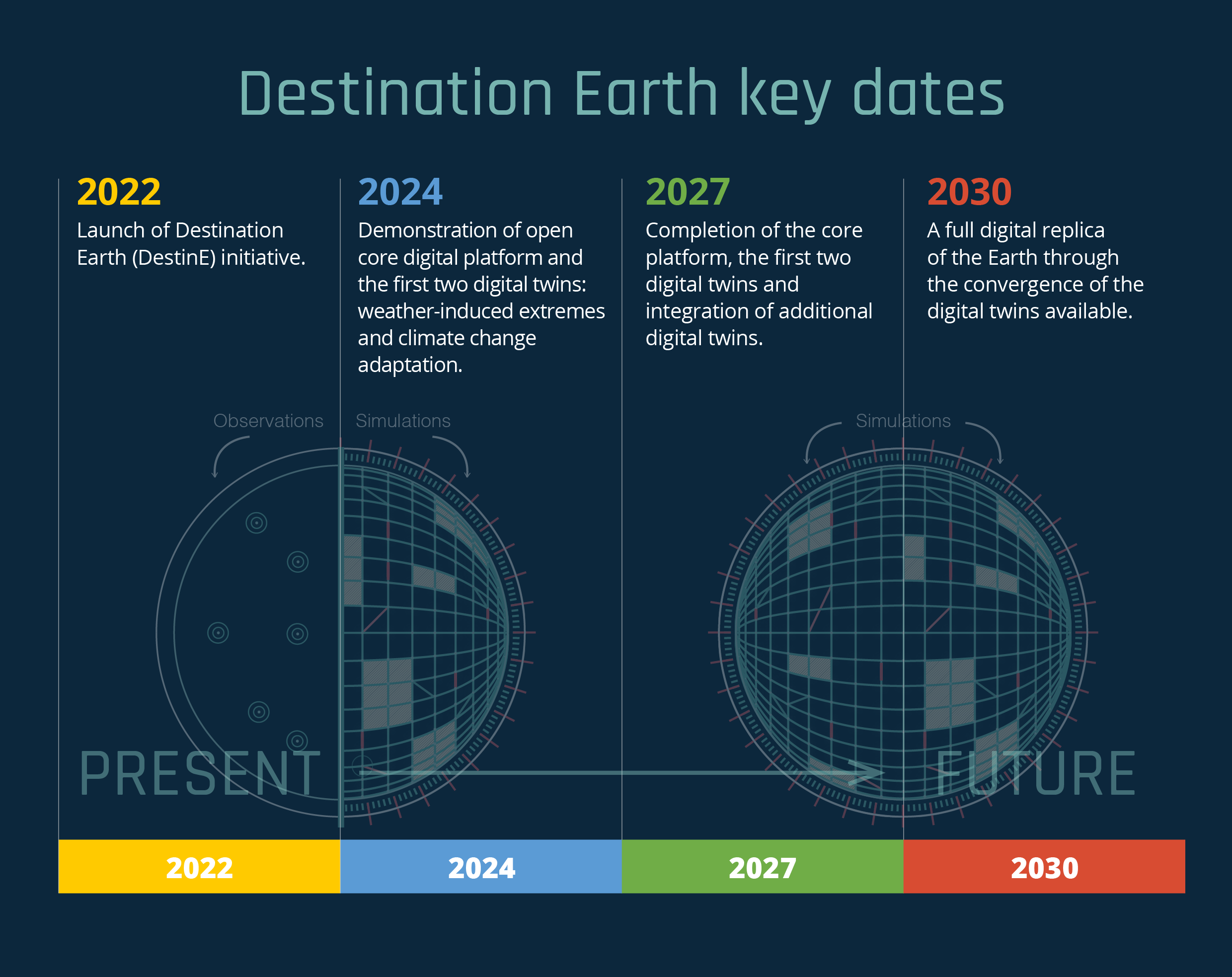
Digital Twins
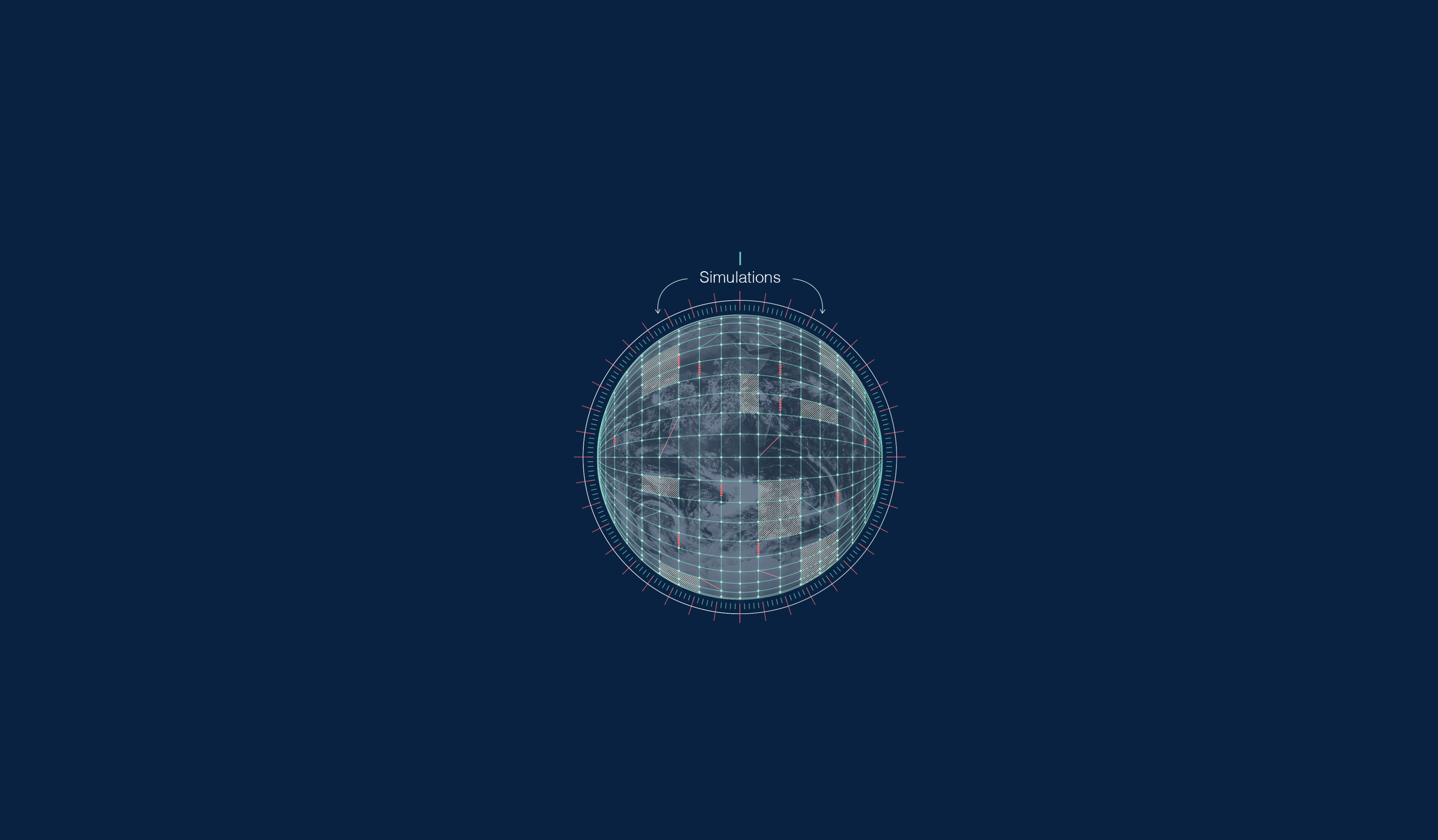
Watch our short animation on the real impact that digital twins can offer.
Watch our short animation on the real impact that digital twins can offer.
Digital twin, real impact
The evolution over the last decades of ECMWF’s model for weather prediction, its role implementing the EU-Copernicus Climate and Atmosphere Monitoring Services, and the Integrated Forecasting System and the latest developments in supercomputing, places us in a strong position to bring the digital twins to life.
Research running the first seasonal integrations at a spatial resolution of 1 km and the ECMWF Scalability Programme, paved the way for generating the highly complex models and computing codes needed to produce such simulations of the Earth-system on powerful supercomputing infrastructures.
The individual digital twins will produce near real-time, highly detailed and constantly evolving replicas of Earth, including the impacts of human activities. Ultimately, the twins will be combined to build a single, highly complex replica of the Earth system that will be more detailed than anything seen before, providing prediction capabilities with an unprecedented level of detail and reliability but also an infrastructure to interact with models and data in new ways.
The Digital Twin Engine
The Digital Twin Engine, which powers the digital twins will provide the software infrastructure needed for extreme-scale simulations and data fusion, data handling and machine learning adapted to exploit the capabilities of the state-of-the-art supercomputer technology available.
It will also provide a flexible environment to operate the digital twins, trial on demand configurations adapted to specific applications and integrate them in the wider European and International digital environment.
Machine learning and artificial intelligence will be used to improve the realism of the digital representations of our world and their efficiency in terms of computing.
It will result in a powerful, scalable, interactive engine giving access to the digital twin's data in real-time, with enough flexibility to be adapted to different architectures and needs, across all the future digital twins.
Learn more about the role of the Digital Twin Engine and the Digital Twins in this explanatory animation.
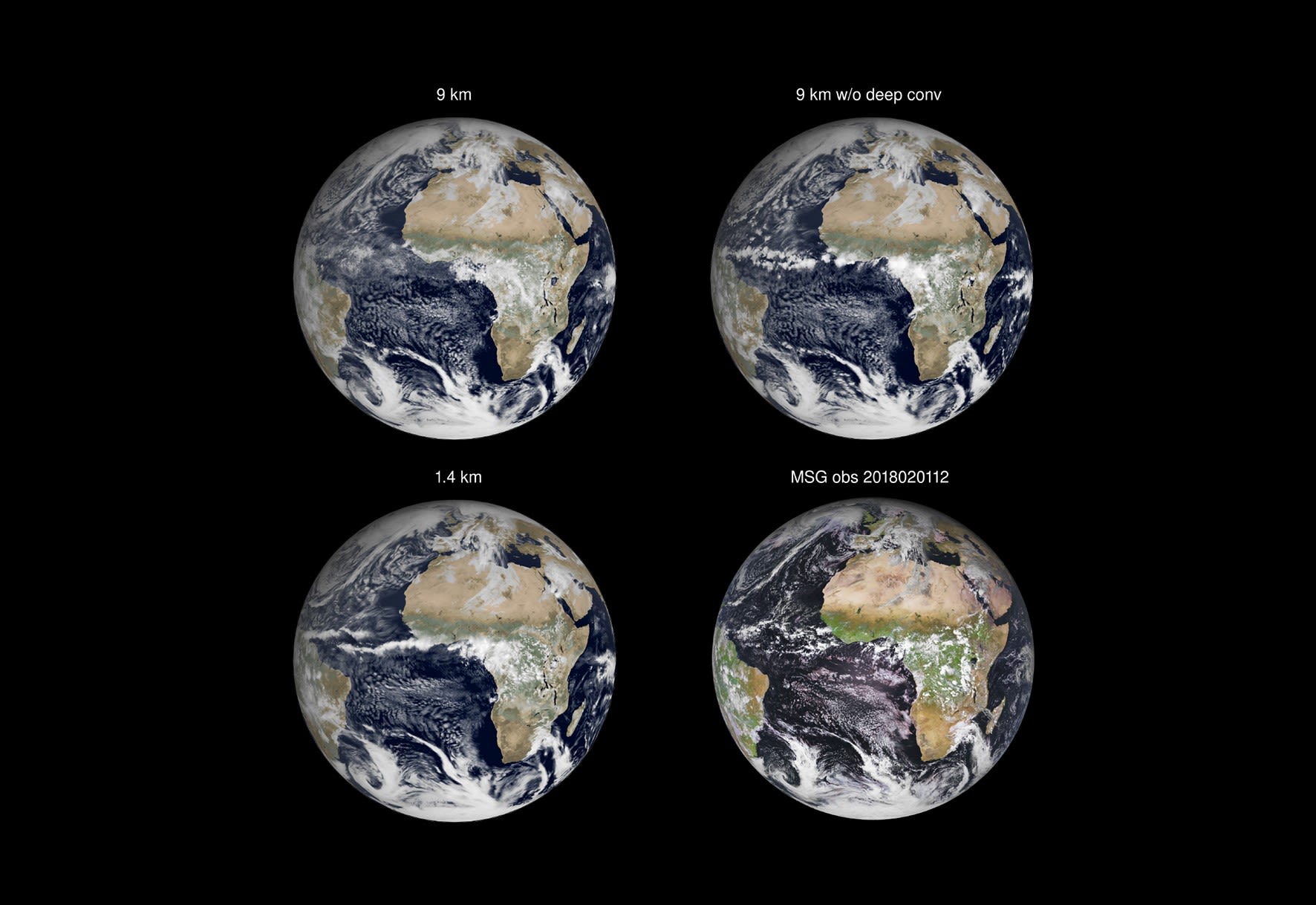
The digital twin on Weather-induced and Geophysical extremes
The first high-priority digital twin on Weather-induced extremes will deliver breakthroughs in accuracy, level of detail, interactivity and access to data speed. Its extension to geophysical extremes will follow in phase 2 of the programme.
It will support near real-time decision-making for impact mitigation and risk assessment of the increasingly frequent extreme weather events.
Building upon ECMWF’s decades-long experience in numerical weather prediction, it will be able to provide much more detailed information on extreme weather, hydrology and air quality from continental to city level.
The twin will be built using a co-design approach to match the requirements of sensitive sectors such as agriculture, water or energy resources management.
The digital twin on climate adaptation
The climate change adaptation digital twin will provide simulations of climate scenarios from global to regional and national levels at a multi-decadal timescale, including uncertainty quantification.
The goal is to help society, decision makers, and users from climate-sensitive sectors to better understand the impacts of climate change, supporting the adaptation and mitigation strategies.
As with the extremes twin, the climate adaptation twin will largely rely on co-design through close and permanent contact with users from impact-sectors to make sure the digital twin responds to their information needs.
Both digital twins are to be built in a scalable and flexible software architecture to ensure the interoperability within the Destination Earth environment as well as across the European supercomputer and data handling infrastructures.
They will also rely on the integration of extreme-scale computing and real-time environmental observational data handling to produce the most likely current state of the Earth system.
A European computing science challenge
Both weather extremes and climate change derive from global processes, but their impacts are local, and so we need to increase the level of detail of what we can predict and what we measure.
This demands computing capacities currently unachievable.
The Destination Earth initiative will rely on the strength and power of the EuroHPC network of supercomputers and on ECMWF’s bilateral agreements with supercomputer operating nations.
ECMWF has been preparing for years to enhance its Integrated Forecasting System in order to be able to make efficient use of this next generation of supercomputers through the Scalability Programme. Enhanced efficiency through Destination Earth will enable the further development of forecast capability.
The supercomputers based on Graphic Processor Units (GPU) have been a reality for more than a decade and introduced an opportunity to greatly enhance the performance of numerical weather prediction models. Nevertheless, adapting the CPU codes to the programming needs of GPU has been a long process.
The EuroHPC network will help process the extremely complex simulation codes, run the first Digital Twins simulations at scale, as well as support the design of the prototypes that could go into production.
ECMWF is committed to deliver a Weather-induced and Geophysical extremes Digital Twin and a Climate Change Adaptation Digital Twin based on this technology.
We acknowledge the EuroHPC Joint Undertaking for awarding this project strategic access to the EuroHPC supercomputers LUMI, hosted by CSC (Finland) and the LUMI consortium, Marenostrum5, hosted by BSC (Spain), Leonardo, hosted by Cineca (Italy) and MeluXina, hosted by LuxProvide (Luxembourg) through a EuroHPC Special Access call.
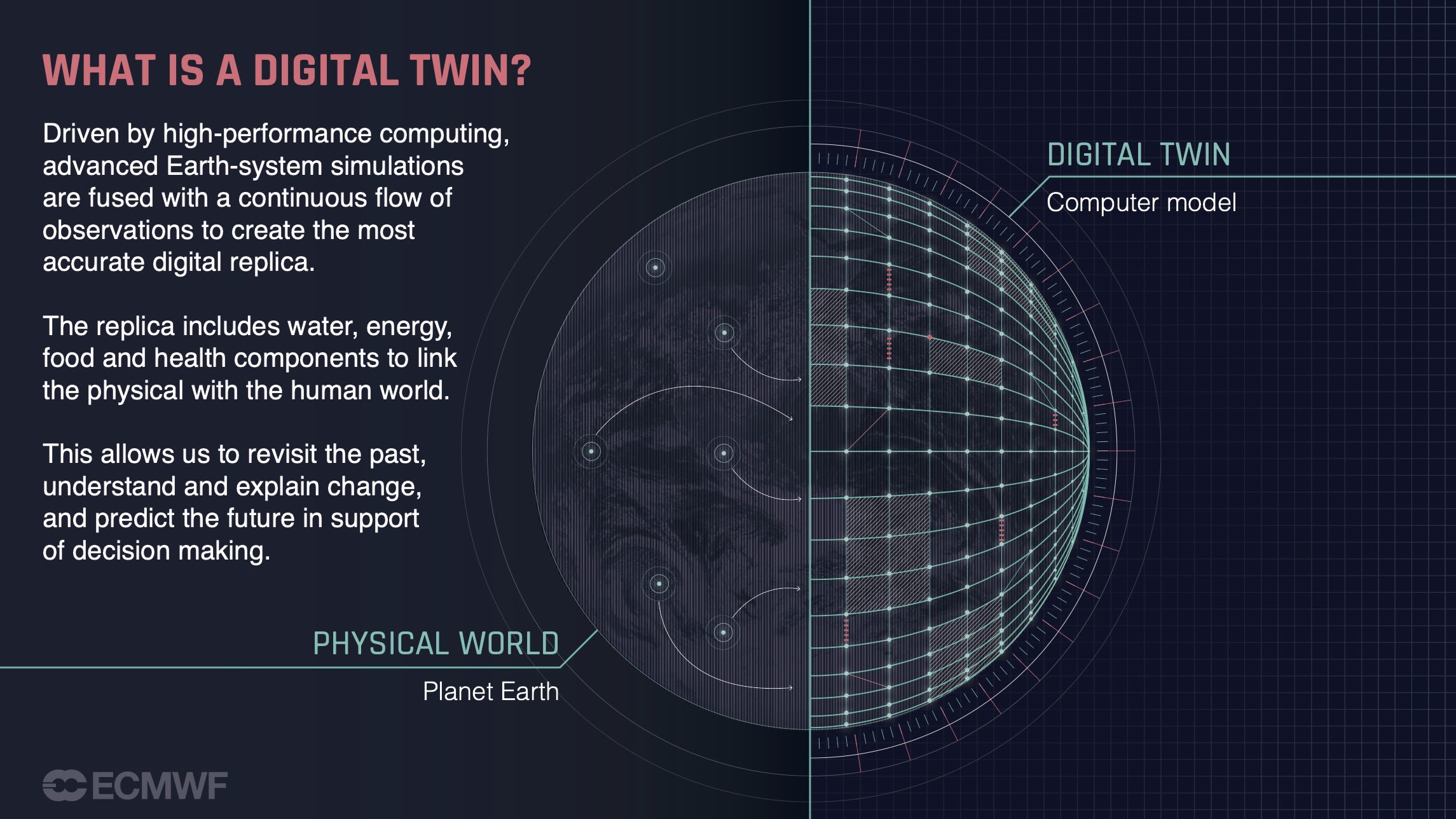
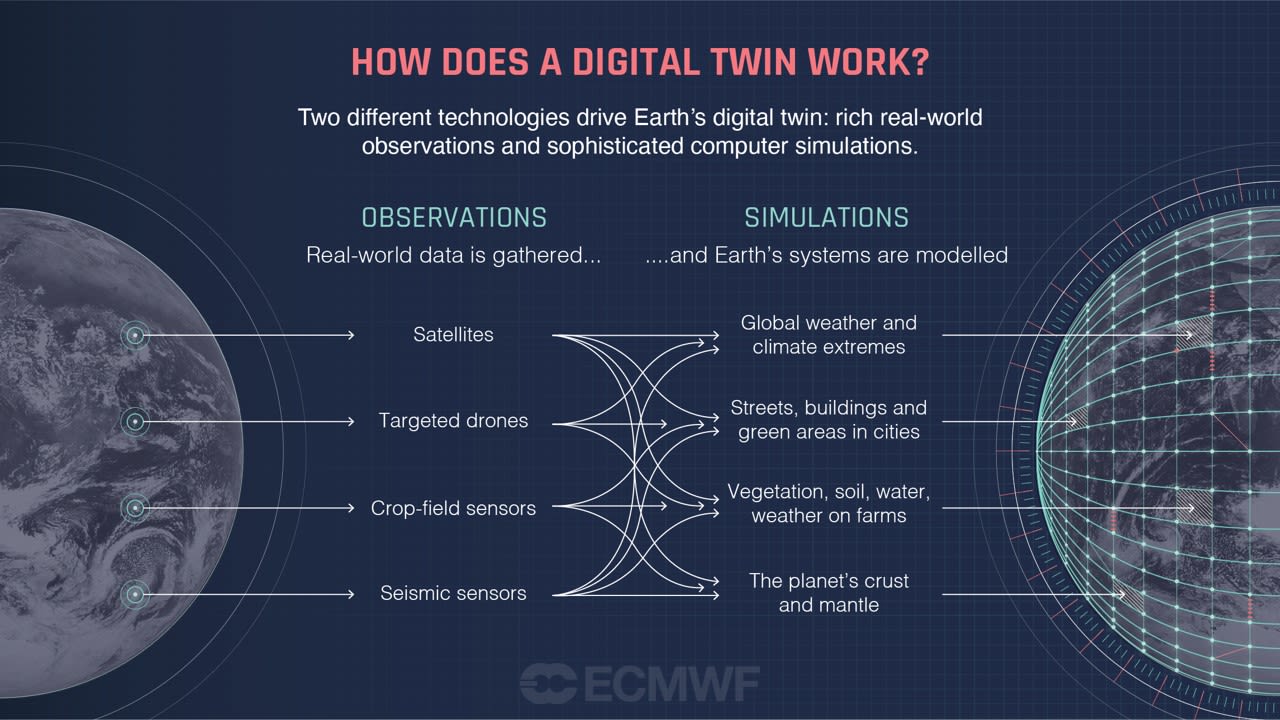
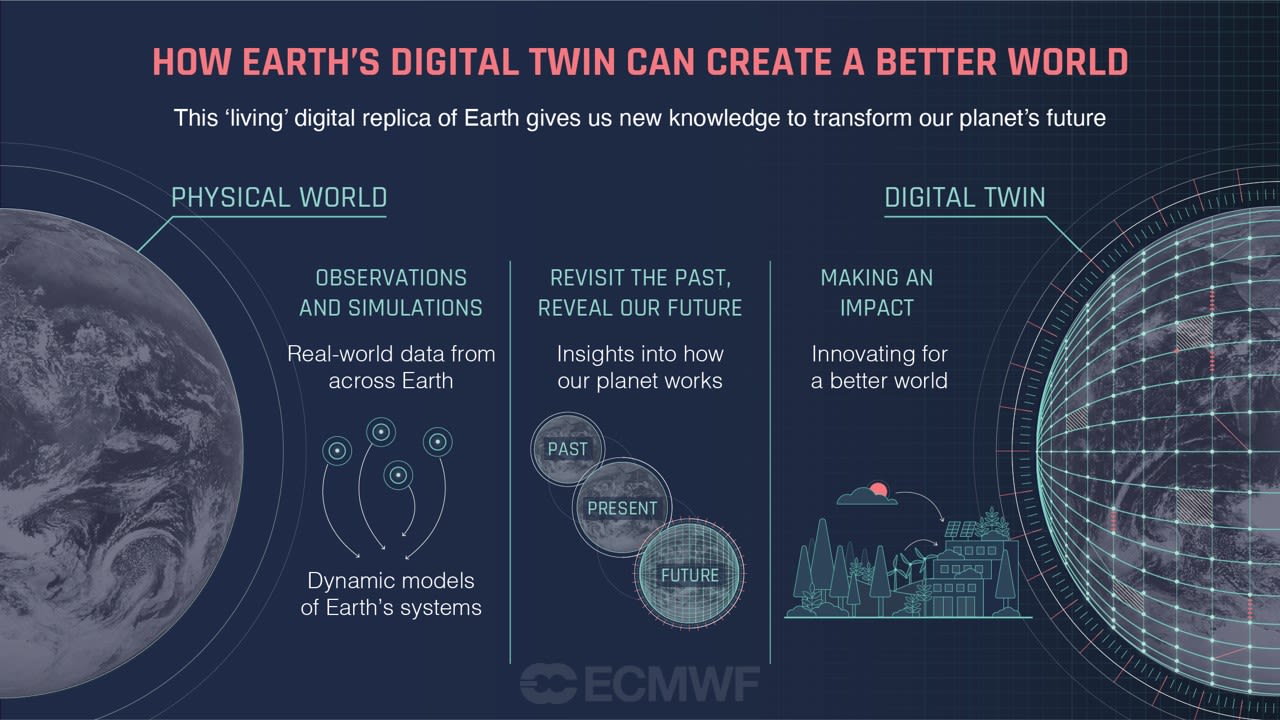
Events, News, Explainers and Media
EVENTS
Save the date! Destination Earth goes live!
The Destination Earth System goes live on Monday, 10 June 2024 in an official launch event from the LUMI Supercomputer Center in Kajaani, Finland. More information
NEWS
The most recent stories and explainers are listed below. To see all of our articles click here
Climate Change Adaptation Digital Twin: a window to the future of our Planet
The Climate Change Adaptation Digital Twin of Destination Earth (Climate DT) is a step change in the way information on climate change is provided, aiming to help face the complex challenges posed by our changing climate. Explore the components, partners and features involved in our in-depth story.
Read the article.
ECMWF takes DestinE digital twins to the EuroHPC Summit 2024
The EuroHPC Joint Undertaking hosted its second summit in Antwerp, Belgium, on 18-21 March. ECMWF sent a significant delegation to explain how we apply cutting edge machine learning and artificial intelligence models on EuroHPC machines to deliver the first digital twins of DestinE.
Read the article.
nextGEMS: an excellent example of European collaboration
As the Horizon 2020 project nextGEMS started its 4th hackathon the first 30-year climate projections simulations at kilometre-scales were achieved, a key development for building the next generation of storm- and eddy-resolving Earth-system models. Find out more about nextGEMS and its synergies with Destination Earth.
Read the article.
A digital twin to sharpen our vision of exteme weather
The Weather-induced Extremes Digital Twin (Extremes DT) creates a unique capability to produce bespoke cutting-edge numerical simulations of extreme events on a timescale of a few days ahead, to support decision-makers to rapidly respond to meteorological, hydrological and air quality extremes as they emerge.
Read the article.
EXPLAINER SERIES
Discover DestinE's technological environment
The Digital Twin Engine
Amongst the different components in DestinE, the Digital Twin Engine (DTE) plays several essential roles in this innovative information system. This explainer introduces the features of the DTE, and details the different roles it accomplishes, acting as a modular and performant framework for Earth System Model Workflows. Read the long-read explainer.
Understanding DestinE's DIGITAL TWINS
The development of a digital twin of the Earth system is at the core of DestinE. But what exactly is a digital twin and what are the specifics of this notion when it relates to creating a digital replica of the Earth system? This explainer details the science behind and the main features of the DestinE Digital Twins. Read the long-read explainer.
Supercomputers: Decoding the science - Explainer Series
The use of high-performance computing is at the core of Destination Earth, with its share of novel and innovative ideas. To fully grasp the entire particulars, one needs to crack the codes of some of the most elementary characteristics of supercomputing. Read the long-read explainer.
USE CASE INFO PAGES
Understand real-world applications
Information in this section is updated regularly.
Addressing urban heat island effect
This use case intends to provide high-resolution urban heat maps for cities across Europe to underpin and motivate urban climate adaptation measures that are being developed. Read the info-page.
Energy Systems
To make power system resilient to meteorological events happening on short time scales and climate change, this use case intends to improve energy system modelling for grid planning and resources adequacy assessment. Read the info-page
Disaster Risk Mitigation & Climate Adaptation
Climate change will result in sea level rise and changes in environmental conditions, such as changing rainfall patterns or marine physical conditions. This use case is working on setting up a digital twin that will support disaster risk reduction and climate adaptation. Read the info-page
Air quality
Weather events like heat waves or droughts are frequently accompanied by severe air pollution. In this context, the DestinE air quality use case develops an interactive air quality forecasting analysis system to assess the population exposure. Read the info-page
Forestry
The Destination Earth use case on forestry intends to provide harvestability maps and information on climate change outlook for Europe, and extend potential new users to a European level. Read the info-page
Adaptation Modelling Framework for Heat Stress Exposure
Enabling a better assessment of heat-stress by simulating different types of climate change scenarios, identifying hotspot areas, high-risk populations, and opportunities. Read the info-page
For further articles related to Destination Earth and other activities carried out by ECMWF, visit the ECMWF media section.
Opportunities to be involved
The Centre believes the challenges for weather prediction, climate and computing sciences, can only be achieved through a comprehensive international cooperation and co-design approach. Therefore, the project is open to a wide range of collaboration opportunities through tenders and partnerships with leading scientific and technological organisations, Member States’ meteorological services and operational services.
Partnerships
ECMWF is engaging with the larger scientific, technological and commercial communities in the context of the development of the digital twins.
To increase the added value of the digital twins for societal applications, they will be co-designed and tested with users from sectors such as water management, renewable energy, health and agriculture. This co-design approach will also help to further improve operational Copernicus Services in the relevant sectors.
We are keen to engage on commercial and non-commercial collaboration with scientific and research organisations, specialists, computing centres.
Recruitment
ECMWF is building capability to deliver this ambitious initiative and a team of science and technology experts have now been recruited.
Visit our jobs page for up-to-date recruitment opportunities.
Tenders
ECMWF is opening invitations for tenders to develop the digital twins. Relevant companies and institutions are invited to submit their applications and join this science and technology adventure.
We seek partnerships in the fields of climate prediction modelling, high-resolution forecasting, graphic rendering or supercomputing infrastructures, among others.
Current Invitations to Tender
Development and Implementation of Ethical Machine Learning Strategies for Destination Earth. Closing 19 April 2024
Check ECMWF Destination Earth procurement page for the most up to date information.
Previous Invitations to Tender
A Concept for a Destination Earth Quality Control Framework
Opened 19 September 2023. Closed: 31 October 2023, 15:00 (CEST)
Machine Learning for Earth system Digital Twins. Opened 06 April 2023. Closed 30 June 2023.
Destination Earth Adaptation Modelling Framework. Opened 17 March 2023. Now closed.
Use Cases. Opened 06 June 2022, now closed.
Visualisation & Immersive Technologies. Opened 09 May 2022, now closed.
Climate change adaptation Digital Twin. Opened 22 March 2022, now closed.
On-demand Extremes Digital Twin. Opened 30 March 2022, now closed.
Information about past Invitation to Tenders is available here.
More information and further procurement opportunities are on our Invitation To Tender (ITT) page.
View our Glossary page for a list of definitions, abbreviations and acronyms.
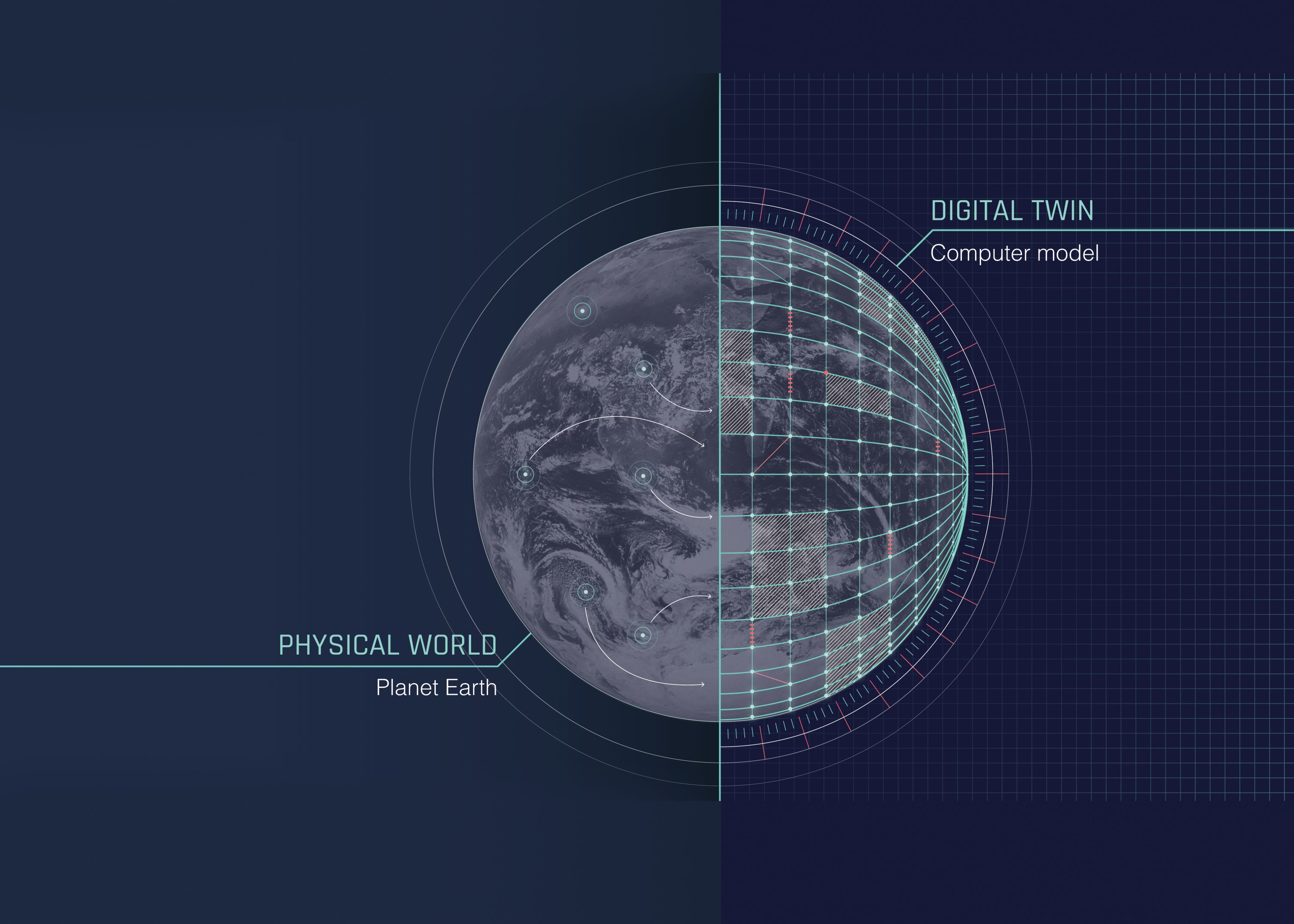
Destination Earth Entrusted Entities
This ambitious programme is deployed in several phases and with three entrusted entities under the leadership of the European Union: ECMWF, ESA and EUMETSAT.
ECMWF is developing the Digital Twin Engine, the complex software and hardware environment needed for the next generation of very high-resolution prediction models, and the first two digital twins.
The European Space Agency ESA is responsible for the development of the Core Service Platform, that will do the interface between Destination Earth’s users and the enormous amounts of observations, simulations and models, decision-making tools applications and services available in the cloud.
The European Organisation for the Exploitation of Meteorological Satellites (EUMETSAT) will build the Data Lake, the storage and access infrastructure for DestinE’s gigantic amounts of data coming from the Digital Twins, from EUMETSAT's Earth observation satellite systems, as well as from the EU's Copernicus Sentinel missions, ESA missions, supplemented by data from the European Centre for Medium-Range Weather Forecasts (ECMWF) and, over time, other data holdings in Europe.


Contact us
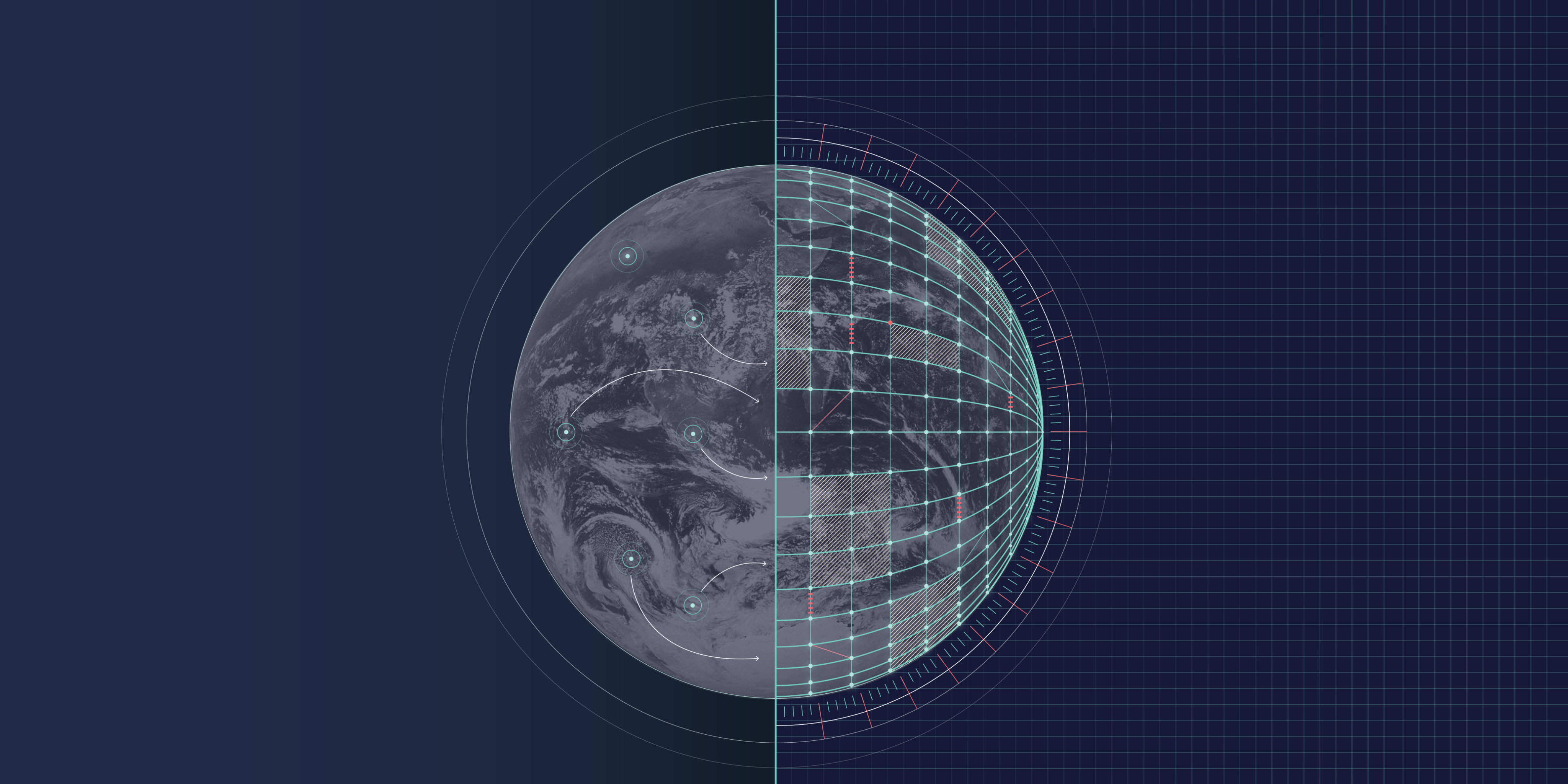
For any questions related to the role of ECMWF in Destination Earth, please use the following email links:
Press and Communications enquiries
Privacy
Terms of use
ECMWF contact
© European Centre for Medium-Range Weather Forecasts

